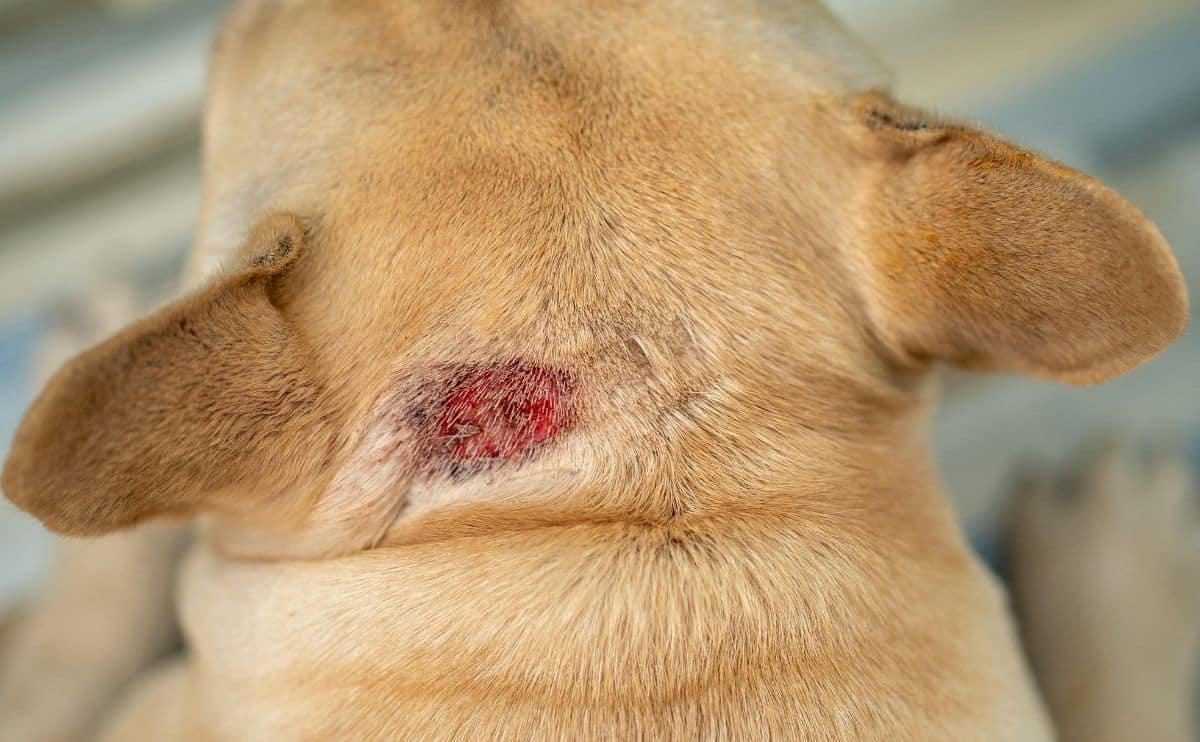Diabetes In Dogs: How To Spot & Treat This Chronic Disease
When you purchase through links on our site, we may earn a commission. Here’s how it works.

Can dogs get diabetes? Yes, and it’s on the rise at alarming rates, just as it is with humans. Between 2009 and 2019, the incidence of canine diabetes increased a whopping 66%, according to an extensive 2019 nationwide report by Banfield Pet Hospital.
Table of Contents
Diabetes in dogs is a chronic, progressive disease that can lead to some serious health complications without treatment. Early detection and management of the disease are key. But with ongoing treatment, a healthy diet, and regular exercise, diabetic dogs can live long and happy lives.
Types Of Canine Diabetes
There are two types of diabetes in dogs: diabetes mellitus and diabetes insipidus (DI). DI is an exceptionally rare disorder that is characterized by excessive thirst and urination, coupled with huge amounts of dilute urine; it isn’t related at all to diabetes mellitus (the insulin-related disease most of us are familiar with).
In this article, we’re focusing on the symptoms and treatment of diabetes mellitus.
Diabetes mellitus is also called “sugar diabetes” or “insulin diabetes.” Like humans, dogs (and cats) can get Type I or Type II diabetes. Type I diabetes develops when the pancreas fails to produce insulin or produces too little insulin. Insulin is responsible for regulating glucose (sugar) in the blood.
Obese dogs are at a greater risk for developing Type II diabetes (when the pancreas makes insulin, but the body’s cells don’t respond to the insulin). While some humans with Type II diabetes can manage the disease with oral medications, dogs don’t respond well to oral drugs. Dogs require regular insulin injections to stabilize their blood glucose, regardless of whether they have Type I or Type II diabetes.
Risk Factors
Common risk factors associated with developing diabetes in dogs include:
- Obesity (discussed above)
- Unspayed female dogs
- Cushing’s disease
- Pancreatitis
- Certain steroid medication treatments (glucocorticoids)
Diabetes also appears to affect some breeds at a higher rate, including:
- Australian Terriers
- Beagles
- Bichon Frise
- Cairn Terriers
- Dachshunds
- Fox Terriers
- Golden Retrievers
- German Shepherds
- Keeshonds
- Poodles
- Pugs
- Samoyeds
- Schnauzers
Diabetes In Dogs Symptom
Diabetes typically appears in dogs seven to nine years old. It can take a year or longer for a dog with diabetes to show any symptoms, and even early warning signs are easy to miss. Some of the early warning signs of diabetes in dogs (and signs of advanced diabetes in dogs) include:
- Increased thirst and urination
- Increased hunger
- Weight loss despite eating normally
Signs of advanced diabetes include:
- Vomiting
- Weakness or fatigue
- Thinning, dry, or dull hair (especially along the back)
- Cloudy eyes (cataracts)
- Depression
If left untreated, diabetes can cause severe damage to a dog’s body. Here are some of the major health consequences if diabetes isn’t controlled.
- Blindness, resulting from advanced cataracts
- Urinary tract infections
- Kidney failure
- Enlarged liver
- Seizures
- Ketoacidosis*
*Ketoacidosis is a life-threatening acute condition triggered by stress, fasting, infections, surgery, and low insulin levels. Symptoms include rapid breathing, lethargy, vomiting, dehydration, and sweet-smelling breath. If your dog has diabetes, you should always have ketone testing sticks on hand and test your dog’s urine if he shows any of these signs. If his urine tests positive for ketones, you should call an emergency vet immediately.
Diagnosing Diabetes In Dogs
If you notice signs your dog has diabetes, it’s time for a vet visit. Your vet will ask about any symptoms you’ve seen and will check your dog’s general health to rule out other possible conditions or infections.
The first test your vet will conduct is a urinalysis, which is a general urine test that can detect glucose and ketones in your dog’s urine. Ketones are chemicals produced by the liver when the body doesn’t have enough insulin to turn glucose into energy.
If the urinalysis tests positive for ketones and high levels of glucose, the next step is to measure your dog’s blood glucose concentration. If glucose levels are high in both the urine and the blood, the vet will make a definitive diagnosis of diabetes.
Diabetes In Dogs Treatment
Treating canine diabetes involves a lot of daily management on the part of pet parents, but once you get into a routine, it’s not as daunting as it first sounds. The three main areas you need to focus on include:
Insulin Injections
Most diabetic dogs require shots of insulin after every meal or at least once a day. Your vet will determine the frequency of injections and the specific amount and type of insulin. It can take several months to find the ideal treatment plan for each dog, so you may need to test your dog’s blood glucose levels daily with test strips. Work closely with your vet to ensure that your dog’s diabetes treatment keeps the disease well controlled.
At first, many owners are apprehensive about having to give their pups shots at home. However, it’s not as bad as it sounds and isn’t painful for your dog. Your vet will show you how to prepare the shots and where and how to administer them just under your dog’s skin.
Many dogs tolerate the injections well when given about one to two inches from the middle of the back or near the shoulder blade or hip bone. Be sure to alternate the location each time you give an injection to avoid soreness. Depending on your dog’s temperament, you may need to get someone to hold your dog gently while you administer his injection.
This brief video by the American Animal Hospital Association (AAHA) takes you through the steps of giving your dog insulin injections.
Regular Exercise
Diabetic dogs must get consistent moderate exercise. In addition to maintaining a healthy weight, this helps avoid sudden spikes or drops in glucose levels.
Change In Diet
Finally, a diabetic dog’s diet is crucial in managing the disease. Your veterinarian will recommend the best diet for your diabetic dog. Typically, this will include low-fat, high-quality protein, fiber, and complex carbohydrates that help slow down glucose absorption.
You may even want to consider switching your dog’s diet over to all-natural dog food. Our reviews of the best dog food delivery services include several specialized companies that make freshly prepared meals that you can customize for your dog’s individual health needs.
And don’t forget that you’ll need some high-quality diabetic dog treats. Many regular dog treats are very high in sugar. Finding diabetic dog treats at your local pet store can be a challenge. We recommend these all-natural diabetic dog cookies that contain ingredients to help lower blood sugar.
How Much Does Diabetic Dog Care Cost?
While keeping your dog healthy is of the utmost importance, you may be wondering about the impact of insulin and other costs on your wallet. Insulin for dogs can run you $150 per month or more, and you’ll also be visiting the vet more frequently.
Consider getting pet insurance while your dog is still young and healthy to cover unexpected illnesses and accidents. While pet insurance can cover ongoing costs from such chronic conditions as diabetes, you must already be covered before your dog is diagnosed (otherwise, it’s considered a pre-existing condition). But if you already have pet insurance when he’s diagnosed, it can help you pay for your dog’s daily insulin and pricey vet expenses.





